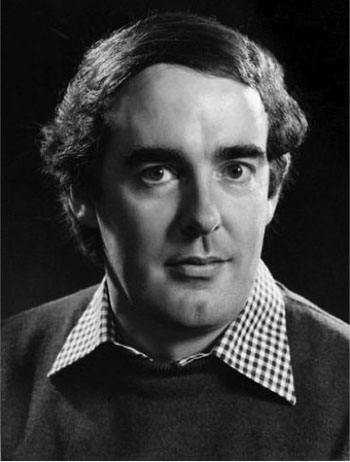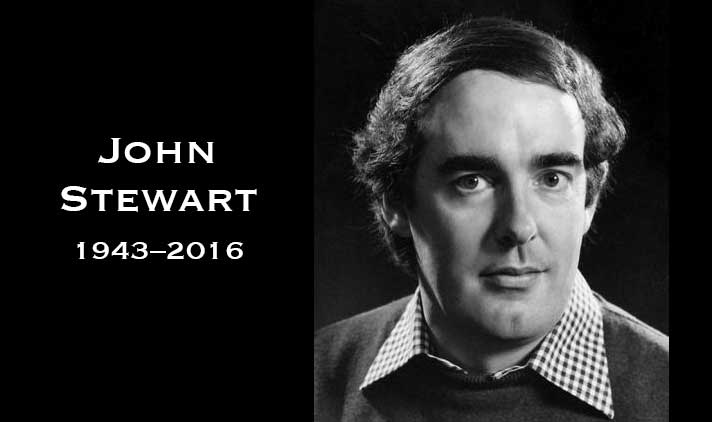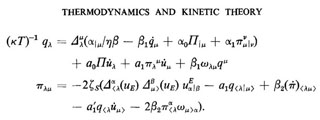John Stewart (1943-2016)
It is with sadness that we report on the passing of John Stewart, Emeritus Reader of Gravitational Physics and Fellow of King's College.

John Stewart was born in Pinner, west London. He was educated at Latymer Upper School and studied at Jesus College, Cambridge, receiving his BA in 1965. He became a student of Dennis Sciama and then George Ellis, graduating with his PhD from the Department of Applied Mathematics and Theoretical Physics (DAMTP) in 1969. From 1968-71 he was a Junior Research Fellow at Sidney Sussex College, moving then to Munich to take up a postdoctoral fellowship at the Max Planck Institute for Physics and Astrophysics. He returned to Cambridge and became a DAMTP Lecturer in 1976. He was promoted to a Senior Lectureship in 2000 and to a Readership in Gravitational Physics in 2003.
For forty years, John was a member and a pillar of the Relativity and Gravitation (GR) group in DAMTP, contributing to its teaching and research activities. Throughout his career, he was universally admired as a superb lecturer by successive generations of students, due to his careful systematic style and the clarity of his explanations, as well as his sense of humour. He pioneered research in relativistic kinetic theory, cosmological perturbation theory and numerical relativity over many years in Cambridge. A number of his former graduate students continue to pursue research in relativity in academic posts around the world, including Luke Drury (Dublin IAS), Ruth Gregory (Durham), Ian Hawke (Southampton) and Oliver Rinne (Albert Einstein Institute). Research activity in numerical relativity remains vibrant in DAMTP and, of course, John was very interested in the recent LIGO announcement of the direct detection of gravitational waves.
John Stewart was also a Life Fellow of King’s College, having become a Senior Research Fellow there in 1975 and then a Fellow and College Lecturer in 1978. Professor Michael Proctor, Provost of King’s, writes:
"John retired as Reader in Gravitational Physics in 2010, but continued to be active in the College and Department until the week before his death. His work on numerical relativity was much admired, but he will be best known to generations of mathematics students at King’s and elsewhere as a patient, careful and meticulous teacher, able to bring illumination to the most difficult of subjects. He took a keen and thoughtful interest in the College’s finances and served on the Investment and Finance Committees and as Inspector of Accounts. He was also very fond of the musical life of the College and was a regular attender at concerts. His expertise will be much missed. He leaves a widow, Mary, a Fellow of Robinson College."
John began his research career studying relativistic kinetic theory and hydrodynamics, culminating in his 1971 book on “Non-equilibrium relativistic kinetic theory” (in the Springer Lecture Notes in Physics series). In 1967 with Dennis Sciama, he published his first paper in Nature on the dipole temperature variations expected in the cosmic microwave background due to the peculiar velocity of the Sun, thus defining an absolute isotropic frame of reference for our Universe. In the same year, with George Ellis, he found a family of perfect fluid and magnetic exact anisotropic cosmological solutions of Einstein's equations that have been important in the study and classification of spatially homogeneous universes.
From 1968-1971, John studied the role of collisionless particles and non-equilibrium behaviours in anisotropic universes and the differences between the behaviour of collisionless particles and that of simple fluid viscosities. This was needed for a detailed analysis of Misner's chaotic cosmology programme and other possibilities for singularity avoidance. John also pioneered the use of phase plane methods in studying the qualitative dynamics of homogeneous cosmologies. From 1973 onwards, his interest grew in black hole spacetimes, accretion disks and turbulence, and in relativistic perturbation theory. A particular highlight was his 1974 paper with Martin Walker that developed the mathematical principles underlying gauge-invariant perturbation theory, including the scalar-vector-tensor decomposition, and which has become the standard methodology in the field.
In 1979 with Werner Israel, John developed a comprehensive theory of causal thermodynamics to handle close to equilibrium behaviour in general relativity, including bulk and shear viscosities, heat conduction and shock wave formation. This work, with over 700 citations, has found recent new applications in string theory with the fluid/gravity correspondence.
In the early 1980s, John began a programme of work in numerical relativity starting with papers with Helmut Friedrich studying the characteristic initial value problem. He subsequently investigated gravitational shocks and gravitational waves, and solved gravitational collapse problems in spherically and axisymmetric contexts. A fascinating byproduct was early numerical work on the consequences of inflationary cosmology. In his 1982 paper with Stephen Hawking and Ian Moss on ‘Bubble collisions in the very early universe’, John showed that slow thermalization or black hole formation could strongly constrain the viability of inflation models. Later with Gary Gibbons and Stephen Hawking, he proposed a natural measure on Friedmann cosmologies to study the likelihood of inflation.

In 1991, John published his CUP book on "Advanced General Relativity" in the Monographs in Mathematical Physics series. From 1993 onwards, with David Salopek and his graduate students, he developed Hamilton-Jacobi theory for studying gravitational perturbations in stochastic inflation and quantum cosmology, as well as structure formation in the late universe. Together with graduate students and collaborators, he continued an active research programme in numerical relativity until his retirement, including work on critical phenomena during black hole formation and the development of gauge formulations and augmented systems suitable for numerical evolution.
Despite his retirement in September 2010, John regularly came to DAMTP to have coffee and work in his office. During this time he wrote a CUP book on the Python programming language, "Python for Scientists", and he was nearing completion of a much larger and extended version with further scientific applications; he was working on this up to a few days before being taken ill.
John will be very much missed, both in DAMTP and at King’s.
John M. Stewart List of Publications (PDF)



